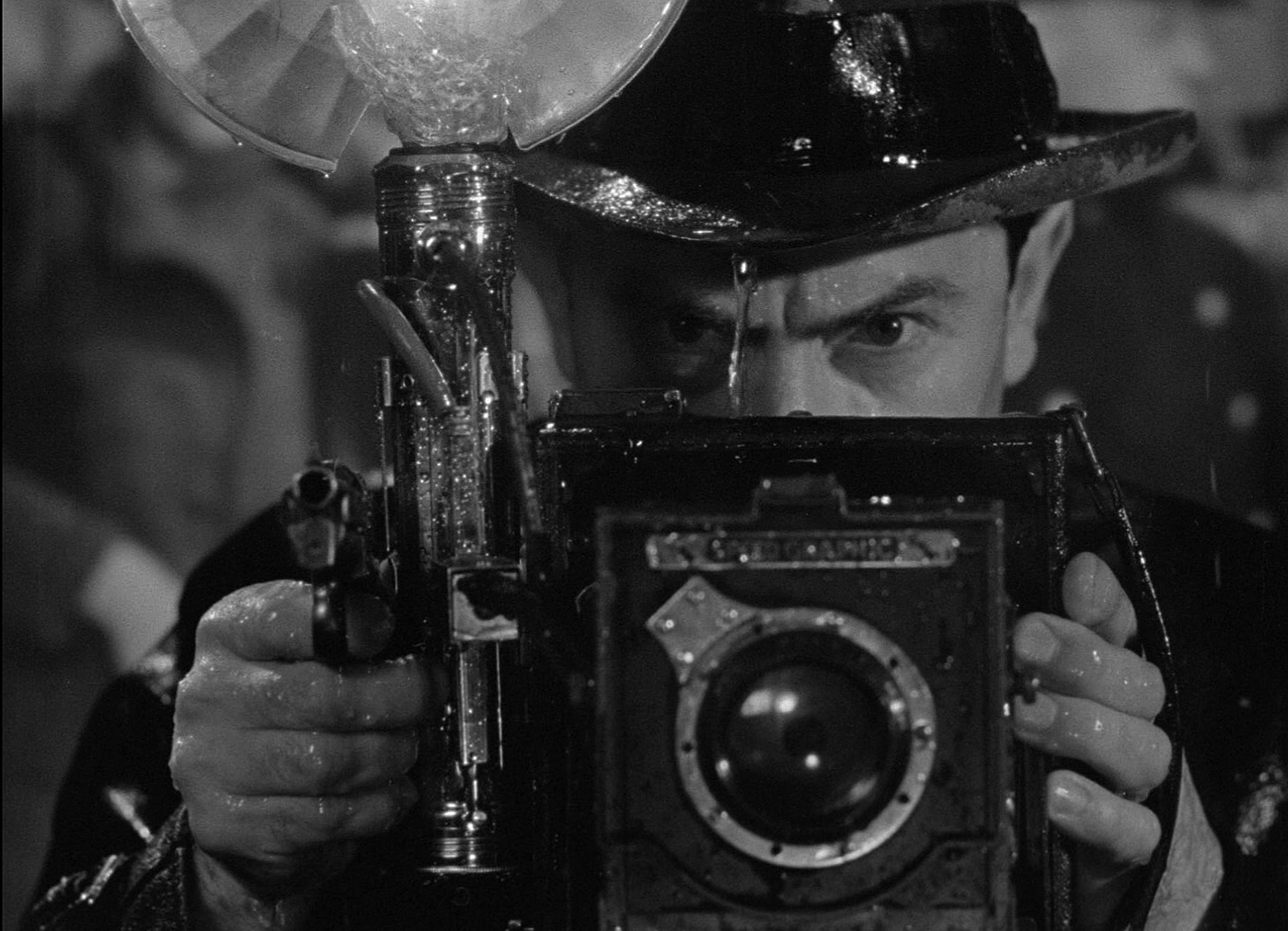Benign Manipulation
Foreign Correspondent (1940) was Hitchcock’s second Hollywood film, though it was Hitchcock’s first Hollywood film in the sense that it was the first true Hitchcock film made in Hollywood. Rebecca (1940) was as much David O. Selznick’s movie as it was Hitchcock’s, which may explain why Rebecca was the only Hitchcock film to win an Oscar for Best Picture.
Foreign Correspondent, on the other hand, is pure Hitchcock. It’s the story of an innocent bystander who becomes involved in an intrigue — a storyline exploited successfully in The 39 Steps (1935), Young and Innocent (1937), and The Lady Vanishes (1938). It also blends suspense, comedy, and romance in a way that would later become synonymous with Hitchcock’s name.
All the actors seem perfectly cast, yet Hitchcock didn’t get his first choice for the title role. In a 1962 interview with Françoise Truffaut, Hitchcock explained how he ended up with Joel McCrea:
In Europe, you see, the thriller, the adventure story is not looked down upon. As a matter of fact, that form of writing is highly respected in England, whereas in America it’s definitely regarded as second-rate literature; the approach to the mystery genre is entirely different. When I had completed the script of Foreign Correspondent, I went to Gary Cooper with it, but because it was a thriller, he turned it down. This attitude was so commonplace when I started to work in Hollywood that I always ended up with the next best — in this instance, with Joel McCrea. Many years later Gary Cooper said to me, ‘That was a mistake. I should have done it.’
Most moviegoers wouldn’t consider Hitchcock to be a trailblazer with special effects, though he certainly was. Take a look at the perspective-distorting zoom or the psychological application of color in Vertigo (1958). Or check out the use of electronic sounds as bird noises or advanced optical printing techniques to simulate large flocks in The Birds (1963).
Foreign Correspondent includes a spectacular shot near the end of the film where a plane is diving into the ocean. You see the water appearing closer, as viewed through the cockpit windshield. When the plane hits the ocean, the water suddenly rushes into the cockpit. All this is contained within a single shot with no apparent edits or special effects, so how was it done? This is Hitchcock’s explanation from the Truffaut interview:
I had a transparency screen made of paper, and behind that screen, a water tank. The plane dived, and as soon as the water got close to it, I pressed the button and the water burst through, tearing the screen away. The volume was so great that you never saw the screen.
Here’s an odd bit of trivia for you. In his article “The Strange Case of Alfred Hitchcock, Part Three,” Raymond Durgnat writes that “Dr. Goebbels loved watching Foreign Correspondent.” Goebbels predicted it would make “an impression upon wide broad masses in the enemy countries.” Hitchcock later speculated that a print was probably brought in through Switzerland. Was this a case of an unscrupulous political manipulator recognizing the skills of a more benign artistic manipulator?
Foreign Correspondent
(1940; directed by Alfred Hitchcock)
The Criterion Collection (Blu-ray and DVD)
Thursday, March 9 at 10:45 a.m. eastern on Turner Classic Movies
Reviews